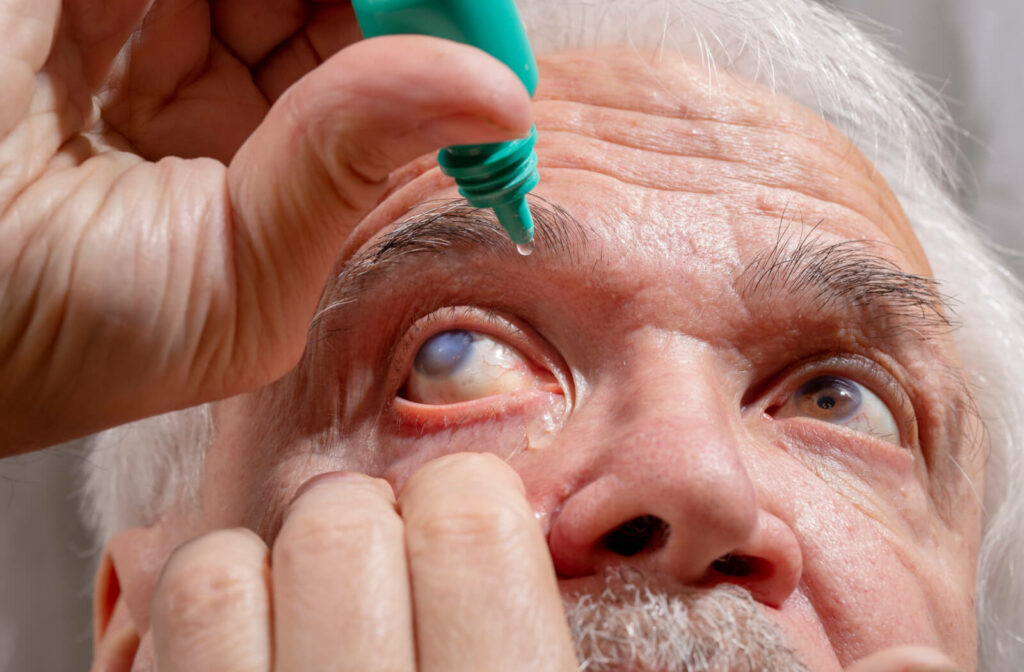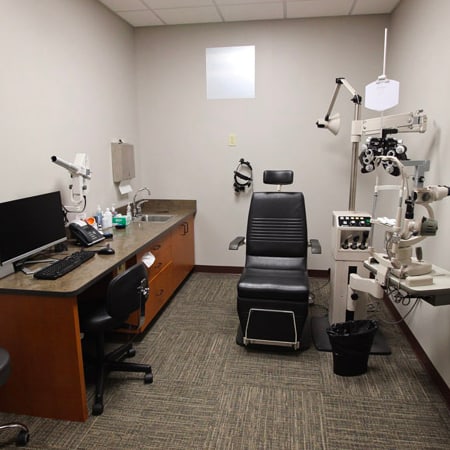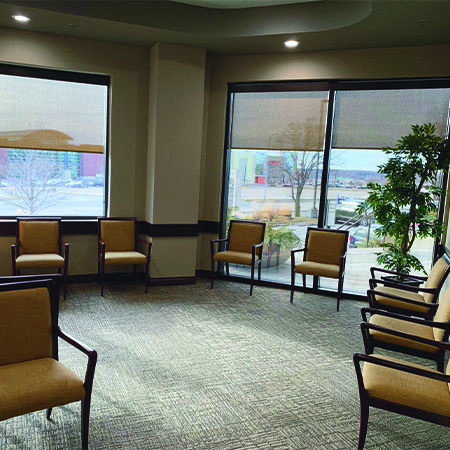Cataracts and glaucoma are both eye conditions that can lead to vision loss, but they have distinct differences in symptoms, causes, and treatments. Cataracts involve the clouding of the eye’s lens, while glaucoma is typically caused by damage to the optic nerve that is often related to increased eye pressure.
Gaining a deeper understanding of the variations between these two eye conditions can aid in early detection and help you get appropriate treatment from your eye doctor.
What Is Glaucoma?
Glaucoma is often caused by high pressure inside the eye, resulting in harm to the optic nerve. If not addressed, this damage can lead to loss of vision.
There are several types of glaucoma, each with unique characteristics. Regardless of the type, early detection and treatment are crucial for slowing the progression of glaucoma and preventing further vision loss.
The common types of glaucoma include:
- Open-angle glaucoma: This is the most common form of glaucoma. Open-angle glaucoma affects approximately 3 million Americans. It can occur when the eye’s drainage system becomes partially blocked, causing a slow increase in eye pressure, and typically develops gradually with no noticeable symptoms in its early stages.
- Closed-angle glaucoma: This form of glaucoma is caused by a complete blockage of the eye’s drainage system. The pressure in the eye rises rapidly, leading to sudden and severe symptoms, such as eye pain, redness, blurred vision, and nausea. Closed-angle glaucoma is a medical emergency and requires immediate attention.
- Low or normal-tension glaucoma: With this form of glaucoma, the eye pressure is in the normal range, but the optic nerve still gets damaged. The exact cause of low or normal-tension glaucoma is not well understood but could be due to a reduced blood flow to the optic nerve or other factors that make the nerve more vulnerable to damage.
Symptoms
The symptoms of glaucoma can vary depending on the type and severity of the condition.
Open-angle glaucoma symptoms include:
- No obvious symptoms or warning signs in the early stages
- Blind spots gradually developing in peripheral (side) vision as the disease progresses
- Vision loss for untreated cases
Angle-closure glaucoma symptoms include:
- No gradual, early symptoms before the onset of the condition
- Halos, mild headaches, blurred vision, and eye pain during the immediate early stages of the condition’s development
- Severe eye or forehead pain, redness of the eye, decreased or blurred vision, seeing rainbows or halos, headaches, nausea, and vomiting as the condition worsens
Normal tension glaucoma symptoms include:
- Eye pressure that is within normal ranges
- Blind spots in the field of vision and optic nerve damage
Causes
Many—but not all—forms of glaucoma are commonly caused by increased eye pressure and damage to the optic nerve. The exact reason for this pressure buildup is not always clear, but some factors that can increase the risk of developing glaucoma include:
- Age (particularly for adults over 60)
- Family history of glaucoma
- Other genetic factors
- High eye pressure
- Diabetes
- High nearsightedness
- Eye injuries
Treatments
While there is no cure for glaucoma, early detection and treatment can help slow its progression and prevent further vision loss. Depending on the type of glaucoma affecting your vision, your treatment options may include:
- Eye drops to lower eye pressure
- Oral medications
- Laser therapy
- Surgical procedures to improve drainage and reduce eye pressure

What Are Cataracts?
Cataracts predominantly occur due to normal changes in the eyes as individuals age. In youth, the lens of the eye maintains its clarity. However, around the age of 40, the proteins within the lens begin to deteriorate and cluster together. This aggregation forms a cloudy region on the lens, which is identified as a cataract. As time progresses, the cataract expands, clouding a larger portion of the lens.
Symptoms
Cataracts typically develop gradually, and symptoms may not be noticeable at first. As the condition progresses, symptoms may include:
- Cloudy or blurred vision
- Increased sensitivity to glaring light
- Difficulty seeing at night or in low light
- Fading or yellowing of colors
- Frequent changes in eyeglass prescription
Causes
The primary cause of cataracts is aging, as the proteins in the eye’s lens break down over time. Other factors that can contribute to cataract development include:
- Family history of cataracts
- Prolonged exposure to ultraviolet (UV) radiation from sunlight
- Smoking
- Diabetes
- Eye injuries
- Long-term use of certain medications, such as corticosteroids
Treatments
Treatment for cataracts typically involves removing the cloudy lens and replacing it with an artificial lens, a procedure known as cataract surgery.
Cataract surgery is a safe and highly successful procedure. Many patients who have cataract surgery have improved vision following the procedure.
What Are the Differences Between Glaucoma & Cataracts?
Understanding the differences between glaucoma and cataracts can help you recognize symptoms, seek appropriate treatment, and maintain your eye health.
Distinct Surgical Goals
The process of cataract surgery includes the removal of the cloudy lens and the insertion of an artificial lens to restore clear vision.
In contrast, glaucoma surgery aims to improve drainage and reduce eye pressure to prevent further damage to the optic nerve.
They Develop Differently
Cataracts develop due to the breakdown of proteins in the eye’s lens, causing cloudiness and blurry vision. This process usually occurs gradually over time and is often related to aging.
On the other hand, glaucoma typically occurs because of damage to the optic nerve, which may be caused by increased eye pressure. The advancement of the disease varies based on its type.
Emergency vs. Non-Emergency Situations
While both conditions require timely treatment, certain types of glaucoma, such as closed-angle glaucoma, are considered medical emergencies.
In contrast, cataracts typically develop gradually and do not immediately threaten vision.
Both conditions should be treated to prevent vision loss.
Reversible vs. Irreversible Damage
Cataracts can cause significant vision impairment, but the effects are often reversible through cataract surgery, which has a high success rate for restoring clear vision.
Conversely, vision loss caused by glaucoma is often permanent, as damage to the optic nerve cannot be reversed. Treatment for glaucoma focuses on slowing the disease’s progression and preventing further vision loss.
Comprehensive Care for Your Eye Health
At Heartland Eye Consultants, our experienced team of eye care professionals can work closely with your family eye doctor to provide eye care in a compassionate and caring manner for a variety of eye conditions. We value taking the time to understand our patients’ unique eyes and provide personalized treatment.
If you’re experiencing vision problems or have concerns about your eye health, contact us today. Our team strives to offer a great patient experience, and we’re dedicated to helping you maintain your eye health.





























